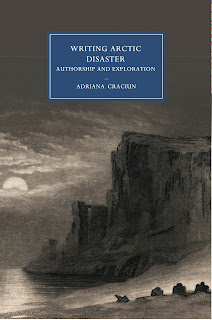Polaris: The Chief Scientist's Recollections of the American North Pole Expedition, 1871-73

Polaris: The Chief Scientist's Recollections of the American North Pole Expedition, 1871-73 Translated and Edited by William Barr U. Calgary Press $44.95 (ebook free) Reviewed by Russell A. Potter Since it's already been the subject of quite a number of books -- Chauncey Loomis's Weird and Tragic Shores , not to mention dueling exposés by Bruce Henderson ( Fatal North ) and Richard Parry ( Trial by Ice ), one might be forgiven for thinking that there's not much new to be learned about the ill-fated Polaris expedition to the North Pole commanded by Charles Francis Hall in 1871. One would be wrong, of course. The expedition's doctor, Emil Bessels, published his own account of the voyage in Germany in 1879 under the title Die Amerikanische Nordpol-Expedition , but until now, there has been no English translation of his memoir. Thankfully, William Barr has undertaken this invaluable project, as he did earlier with Heinrich Klutschak's account of the Schwatka expedi...





